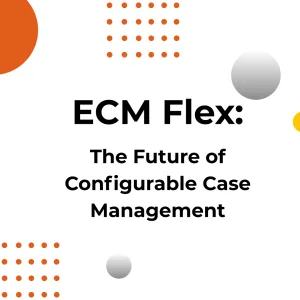Transitional Housing: Providing Stability and Support for Homeless Individuals
Homelessness remains a pervasive social issue, with thousands of individuals experiencing homelessness each year in the United States alone. According to the Department of Housing and Urban Development, 582,462 individuals are experiencing homelessness in America.
While there are many organizations and programs dedicated to helping the homeless, transitional housing has emerged as a particularly effective strategy for providing stability and support to those in need. But what is transitional housing? And how is it different from other types of housing support for homeless individuals?
In this article, we explore the concept of transitional housing programs, their benefits, and their impact on the lives of homeless individuals.
What Is Transitional Housing?
Before we get into the details, let’s start with the definition of transitional housing. Transitional housing refers to a type of temporary accommodation for individuals or families who are experiencing homelessness or facing other housing crises.
Now, what is transitional housing aimed at doing? It is intended to provide a stable living environment for a period of time, typically several months to a year. During this time, residents work to secure permanent housing and address other issues that may have contributed to their housing instability.
Transitional housing may be offered by nonprofit organizations, government agencies, or other entities. It often includes support services such as case management, job training, and counseling to help residents overcome the barriers that led to their housing crisis and achieve stability.
Transitional Housing vs Other Types Of Housing For Homeless Individuals
Transitional housing is just one type of housing option for homeless individuals. Here are some other types of housing that may be available:
Emergency Shelters
These are short-term housing solutions that provide immediate shelter and basic services such as food, showers, and a place to sleep for individuals experiencing homelessness.
Permanent Supportive Housing
This type of housing is intended for individuals who have experienced chronic homelessness or have a disability that requires ongoing support. It provides long-term affordable housing combined with supportive services, such as mental health or addiction treatment, case management, and employment assistance.
Rapid Re-Housing
This housing solution provides temporary rental assistance and support services to help individuals and families quickly move out of homelessness and into permanent housing.
Low-Income Housing
This type of housing is designed for individuals or families with limited income and provides affordable housing options.
The main difference between transitional housing and these other types of housing is the length of stay and level of support provided.
Transitional housing is a temporary solution intended to provide stability and support while individuals work to secure permanent housing. Besides emergency shelters which are also temporary solutions, other types of housing mentioned above provide longer-term solutions to help individuals maintain stable housing.
Services And Support Typically Offered At Transitional Housing Programs
Transitional housing programs often provide a range of services and support to help individuals and families transition from homelessness to permanent housing. Here are some examples:
Case Management
Case managers work with residents to develop individualized plans to help them achieve their goals and address any challenges they may face. Case managers may provide counseling, referrals to other services, and assistance with obtaining employment or education.
At Exponent Case Management, we’ve developed a fully-featured case management solution to help case managers manage all their programs in one place. Our software can help you:
- Create individualized plans for residents
- Track progress toward goals
- Communicate more effectively with other service providers
- Share information about residents as needed
Housing Search Assistance
Staff may help residents search for and secure permanent housing. This includes help with applications, rental deposits, and other related expenses.
Life Skills Training
Transitional housing programs may offer classes or workshops on budgeting, cooking, and other life skills to help residents become more self-sufficient.
Employment Assistance
Staff may help residents find and maintain employment with a workforce development program. This includes job training, placement, and support with resumes and job applications.
At Exponent Case Management, we understand the strong correlation between unemployment and homelessness. To help your organization make a bigger impact in both areas, we’ve developed the Workforce Development Module.
With its user-friendly software and data management capabilities, this solution can help case managers and other service providers ensure that transitional housing residents receive the support they need to succeed in the workforce.
How To Start A Transitional Housing Program
Starting a transitional housing program can be a fulfilling way to help individuals who are experiencing homelessness transition into more stable housing situations. Here are some steps to consider when starting a transitional housing program.
Determine the need
Research the need for transitional housing in your community. Consider factors such as the number of homeless individuals in your area, the availability of affordable housing, and any existing transitional housing programs in your community.
Develop a plan
Develop a comprehensive plan for your transitional housing program. This should include details about the target population, the types of services you will provide, and the length of time individuals will be able to stay in the program.
Secure funding
Transitional housing programs can be expensive to operate, so it is important to secure funding before starting your program. Grants for transitional housing are available from a variety of sources, including government agencies, foundations, and private donors.
Find a location
Once you have secured funding, you will need to find a location for your transitional housing program. Consider factors such as accessibility, proximity to public transportation, and the availability of support services in the area.
Hire staff
If you don’t already, you will need to hire staff to manage and operate your transitional housing program. This may include case managers, social workers, and other support staff.
Establish partnerships
Partner with local service providers and organizations to provide support services for your residents. This may include job training, education, and healthcare services.
Develop policies and procedures
Develop policies and procedures for your transitional housing program to ensure that it operates efficiently and effectively.
Transitional housing program FAQs
How long can individuals stay in transitional housing programs?
The length of stay in transitional housing programs varies depending on the program. However, according to the National Coalition for the Homeless, the average length of stay in transitional housing for single men was 175 days, 196 days for single women, and 223 days for families.
The Administration for Children and Families also states that services are provided for up to 540 days in most cases. Longer stays are available for young people who turn 18 while in housing but most programs have a maximum stay of two years.
What are the eligibility requirements for transitional housing programs?
Eligibility requirements for transitional housing programs also vary depending on the program. Typically, individuals must be experiencing homelessness or at risk of homelessness, have income below a certain threshold, and be willing to participate in case management and other supportive services.
What is the success rate of transitional housing programs in helping individuals transition to stable housing and employment?
The success rate of transitional housing programs is difficult to measure, as it depends on the individual’s specific circumstances and the quality of the program they are enrolled in.
However, findings from the Transitional Living Program Youth Outcomes Study showed that 78% of youth went to a permanent housing situation upon leaving the program. Fewer than 1 in 10 (8%) experienced homelessness immediately upon leaving their program.
Start your transitional housing program and break the cycle of homelessness
Starting a transitional housing program can be challenging, but it can also be incredibly rewarding. With the right planning, funding, and support, you can help individuals who are experiencing homelessness transition into a more stable housing situation.
Additionally, it is important for organizations offering transitional housing programs to have the tools and resources they need to manage their services effectively. This is where Exponent Case Management’s HMIS module can make a real difference. With its robust case management tools and powerful reporting and analysis features, our HMIS module can help improve the accuracy of your housing and homelessness data and streamline your operations.
Does your organization want to help break the cycle of homelessness with an effective transitional housing program? Watch our live demo for more information on how Exponent Case Management can help and reach out to us if you have any questions.



